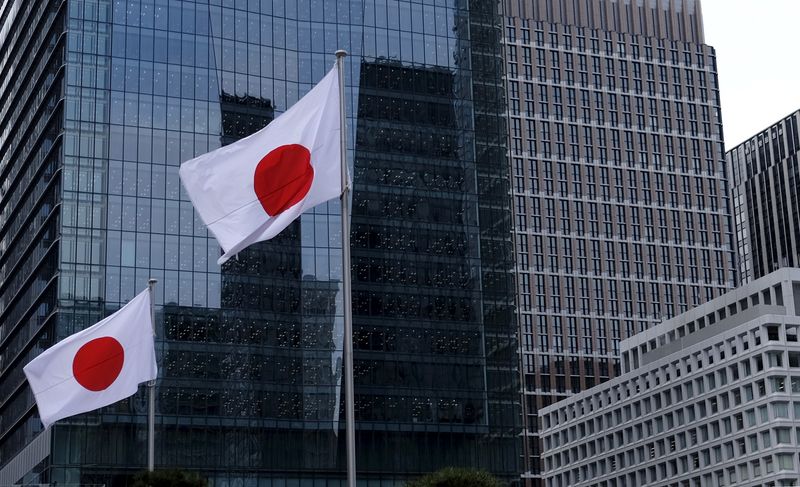By Brigid Riley
TOKYO (Reuters) - The Bank of Japan (BOJ) is expected to unveil details of a quantitative tightening (QT) plan at its monetary policy meeting next week, aimed at reducing its holdings of government bonds.
Given the size of its balance sheet and large presence in the market, it's a massive undertaking with various factors for policymakers and investors to consider.
Here's what you need to know:
WHAT DO MARKETS EXPECT?
The BOJ will release plans on how it will reduce its huge purchases of Japanese government bonds (JGB) over one to two years, another step towards loosening its grip on the market and normalising monetary policy.
While a wide range of views has surfaced, the broad consensus centres on the BOJ gradually reducing its monthly purchases of JGBs to 3 trillion yen ($19.52 billion) from its current pace of 6 trillion yen.
WHAT'S THE BOJ'S AIM?
Analysts say the eventual goal will be to cut its bond purchases and reduce its massive balance sheet to a level where short-term interest rates start to rise. The plans unveiled this month will be the first step in a long QT process.
It also wants a steeper yield curve that enables banks to make a decent margin from lending.
In slowly leaving the market, the BOJ wants to allow enough time for investors to absorb the bonds it will no longer purchase. It also wants to avoid a spike in yields.
Takeshi Yamaguchi, chief Japan economist at Morgan Stanley MUFG Securities, says if the central bank reduces its monthly bond buying to 3 trillion yen, the benchmark 10-year yield would only rise between 10 to 20 basis points.
HOW BIG IS THE BOJ'S BALANCE SHEET?
The BOJ's balance sheet has ballooned over the past decade as it aggressively bought JGBs to defend its now defunct yield curve control (YCC) policy, which kept 10-year yields capped around 0%.
Its total assets as of June stood at 754 trillion yen ($4.90 trillion), five times the U.S. Federal Reserve's in ratio-to-GDP terms.
The central bank's JGB holdings make up the largest portion, coming in at a whopping 585 trillion yen ($3.80 trillion). Although down from its peak ownership rate of 54%, it's still just over half the entire JGB market.
HOW DOES THAT IMPACT MARKET FUNCTIONING?
Market functioning was hit as the BOJ expanded its ownership in the JGB market.
The BOJ's most recent survey on bond market function stood at -24 in May, up from -29 in February and improving to levels unseen since February 2022 after the central bank ended YCC in March, but still deeply negative.
HOW LONG WILL IT TAKE TO TRIM THE BALANCE SHEET?
Shrinking the BOJ's balance sheet won't be quick or easy.
While no one knows how much stock the BOJ will ultimately keep on hand, Japan's central bank held 175 trillion yen in total assets and 98 trillion yen in JGBs in April 2013 when it began monetary easing.
Economists at Capital Economics estimate it would take the BOJ about nine years to reduce JGB holdings to 100 trillion yen if it were to stop buying bonds altogether.
Analysts don't expect the BOJ to actively sell bonds.
WHAT MATURITIES MIGHT THE BOJ FOCUS ON?
Defending YCC policy meant the BOJ's buying has been most concentrated in 10-year bonds or shorter, making supply-demand conditions tight, so market participants and analysts speculate that's where it could reduce purchases the most.

But the preferred shape of the curve depends on types of investors. For example, mega banks want a sharper curve as they borrow short-term and lend long-term.
($1=153.72 yen)